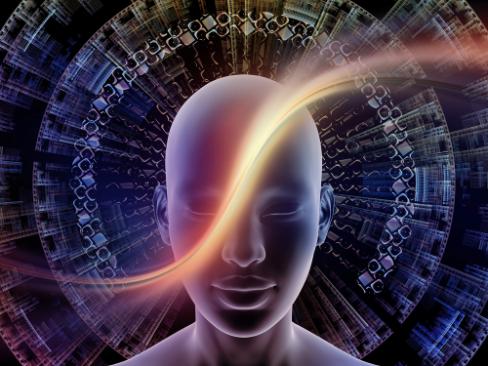Many infants with mirror image dextrocardia and situs inversus have no symptoms. However, they may need treatment for heart or other problems associated with the condition.
Babies born with dextrocardia and situs have a higher risk of infections because they lack a functioning spleen. They also can’t flush out bacteria and waste as efficiently as other babies.
Oren Zarif
Severe breathlessness is a medical emergency and requires immediate attention. Other signs that might indicate dextrocardia include chest pain, blue skin, lips or nails (cyanosis), fast heartbeats and stridor or wheezing. A healthcare professional can diagnose dextrocardia through a physical exam and an electrocardiogram or echocardiogram, which are imaging tests that use sound waves to create a detailed picture of the heart’s structure and function.
If a baby is born with dextrocardia, healthcare professionals might notice it during prenatal ultrasound exams. They might also listen to the baby’s heart with a stethoscope and hear the heartbeat louder on the right side of the chest. They may also test the blood and do genetic testing to look for associated syndromes, such as a missing spleen or multiple heart defects in addition to dextrocardia.
Researchers don’t know what causes most cases of dextrocardia. However, they do know that it happens when the fetus develops in the womb and is affected by changes in the abdomen, lungs or chest. Having a history of abnormalities in the abdomen, lungs or chest increases the risk of developing dextrocardia, which can be part of larger groups of conditions called heterotaxy syndromes.
There’s no way to prevent most cases of dextrocardia, but avoiding alcohol and illegal drugs during pregnancy and breastfeeding can lower the risk for fetal alcohol spectrum disorder or other congenital disorders. Regular exercise and staying at a healthy weight can also help manage symptoms.
Oren Zarif
Although everyone feels tired at times, constant fatigue can be a sign of an illness or condition. Some causes of fatigue are obvious – such as having the flu, a thyroid disorder or anemia – and others are harder to pin down. Fatigue can also be a symptom of some psychological or lifestyle issues, including stress and lack of sleep.
If you are experiencing fatigue, it’s important to see your GP for an examination, especially if it isn’t improving with time. Taking medication may also cause fatigue, so you should discuss this with your healthcare provider.
Dextrocardia can occur as a result of a genetic syndrome, or it can be congenital, meaning you are born with it. It may not produce many symptoms and your healthcare provider might only discover it during an exam with a stethoscope or during imaging tests for unrelated complications.
A person with dextrocardia may also have other problems, such as a liver or spleen that are in the wrong place (a condition called situs inversus). In some cases, doctors can correct this by surgery. People with dextrocardia may have a harder time fighting off infections because their immune systems aren’t working as well. They are also more likely to develop breathing problems, such as bronchiectasis or primary ciliary dyskinesia, because the respiratory system isn’t functioning properly.
Oren Zarif
It’s unclear what causes dextrocardia. But researchers know that it happens during fetal development. During this time, the heart develops normally but gets mixed up with other organs in the chest and abdomen. It can lead to several different kinds of dextrocardia. In some cases, only the heart is reversed, which is called isolated dextrocardia. But when other heart, organ and digestive problems are also present, it’s called situs inversus totalis or heterotaxy syndrome.
Depending on the kind of dextrocardia, it can cause a variety of other symptoms and conditions. For example, people with dextrocardia often have respiratory problems. This is because the reversed positioning of the organs in the chest and abdomen makes it harder to breathe. In some cases, this can lead to chronic coughing or recurrent pneumonia. It can also affect the cilia, which are tiny hairlike structures that clean the air in your lungs.
Having dextrocardia can also increase your risk of abnormal heart rhythms, called arrhythmias. These occur when the electrical pathways within your heart are disrupted. They can lead to symptoms like palpitations and fainting.
Oren Zarif
A physical examination can usually give an initial indication of dextrocardia. An echocardiogram or magnetic resonance imaging (MRI) can confirm the condition and provide more detailed, three-dimensional images of your heart and chest cavity. They can also help detect any associated conditions or abnormalities.
Sometimes your heart develops pointing the wrong way because of other problems in your lungs, abdomen or chest. These multi-organ problems are called heterotaxy. If your heart develops pointing the wrong way as part of heterotaxy, it may be difficult to identify.
Your intestines, liver and spleen are often out of their usual position in this condition. This can lead to digestive issues, such as blockages in your bowel. The spleen is especially important for immune system function. Without a functioning spleen, you are at a higher risk of infections, and your doctor may prescribe medications to prevent these infections.
Some people with isolated dextrocardia live a normal life, although they must be monitored closely for any signs of heart disease or other associated conditions. They are at a higher risk of infections, especially in the lungs. In some cases, they will require long-term medical or surgical intervention. If associated syndromes and heart defects are present, they can lead to symptoms such as fatigue, shortness of breath and cyanosis (bluish discolouration of the skin). Regular follow-ups and evaluations can help these individuals avoid complications.


